Running Stretches For Beginners: How To Stretch After Your Run
Learn the best running stretches for runners and how to stretch after your run to boost recovery and avoid injury.
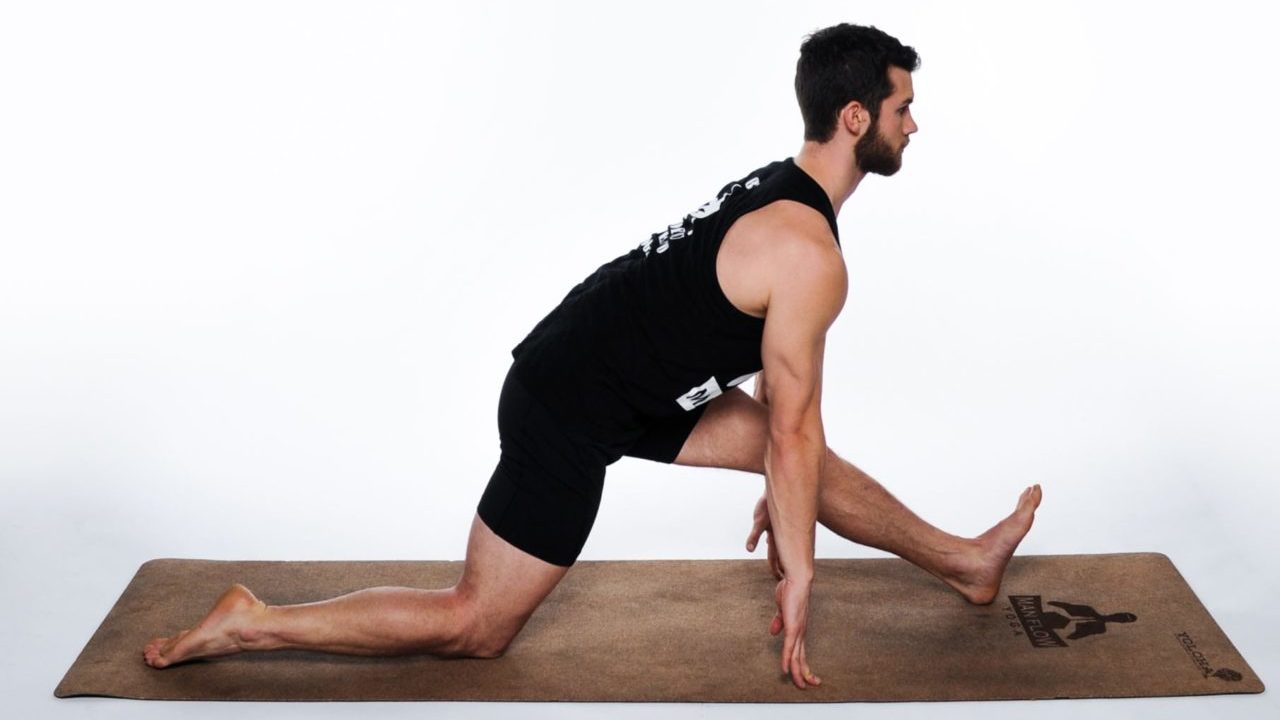
So, you just picked up running? No doubt the beginner running tips are starting to roll in. How to get faster, how to start feeling a little less miserable, how to prevent cramps, and how to reduce soreness. But along with this, most runners often forget the running stretches for beginners.
Running Stretches for Beginners: How To Stretch After Your Run!
Well, you’re in luck! In this post, we discuss which are the best stretches for runners and one of the most IMPORTANT beginners running tips on how to stretch after running for building longevity as a healthy runner. Don’t forget to include them in your running program to get the best results from your running workouts.
Beginner Running Tips: Stretching Is Not An Option
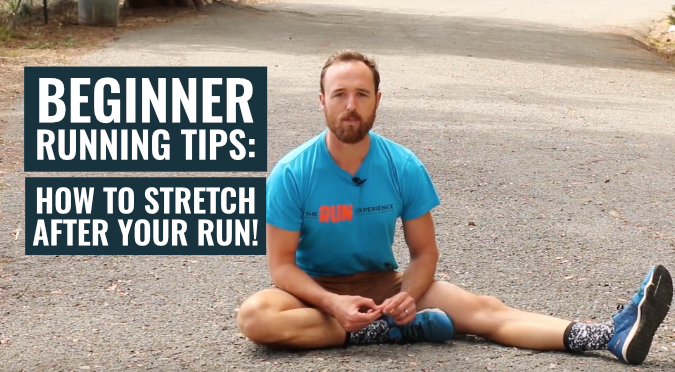
Like any other physical activity, running requires strength. Strength requires muscle. And, muscle requires regular maintenance.
You don’t expect any other machine (your car, refrigerator, blow dryer) to operate day in and day out for you without your taking care of it.
The same goes for your body…and more specifically, your running body. You’ve GOT to be stretching, every SINGLE day. Let me repeat that.
EVERY. SINGLE. DAY.
Lucky for you, the research has already been done. So let’s break “stretching” down for you!
Stretches For Runners: When and How You Stretch Matters
By now, you’ve probably realized how different your body feels before and after you run.
Pre-run: Achy quads, hip flexors, and calf muscles, cold, stiff lower back, your breathing is shallow
Post-run: Warm, sweaty, more mobile, you’re able to take longer, deeper breaths
Knowing this, one of our running tips for beginners is that stretching incorrectly can get you injured, quick! Doing harsh, static (still) stretching exercises before you’re warmed up is like yanking on a rotten rubber band. It’s not going to be pretty.
Stretching before your run:
- It should be dynamic (movement based).
- Shouldn’t hurt.
- The range of motion will be smaller.
- Should help to increase the heart rate and warm up the body.
Stretching after your run:
- It can be a mix of dynamic stretching and static stretching (holding still in one position).
- This should help slow your heart rate.
- The range of motion will be better.
- It can physically help lengthen the muscles using the heat generated by the run.
- This should increase your overall flexibility, longterm.
Understanding these differences from the get-go will benefit you greatly, and most importantly help you in preventing running injuries!
Best Running Stretch for Beginners: Side Bend Stretch

Ok, so you just finished your run. Maybe you walked some, but you definitely ran.
You’re sweaty, out of breath, and probably ready to stop moving. Try this out:
- After your heart rate has calmed down a bit (this part is important!), take a seat.
- Bend your left leg in, “butterfly” style.
- Extend your right leg out to the side.
- Wrap the arm of the extended leg around the front of your waist for support.
- Reach the other arm toward the sky, right next to your ear.
- Take a big inhale.
- Then, take a big exhale and bend towards the extended leg.
- Take a big inhale.
- On the next big exhale, bend even further toward the extended leg.
- Repeat this for 5-10 breaths.
- The exhale is where the magic happens. Your muscles can relax on the exhale, allowing greater length and easier bend.
- This is great for opening up your side body, where a lot of your deep breathing and core engagement occurs.
After that:
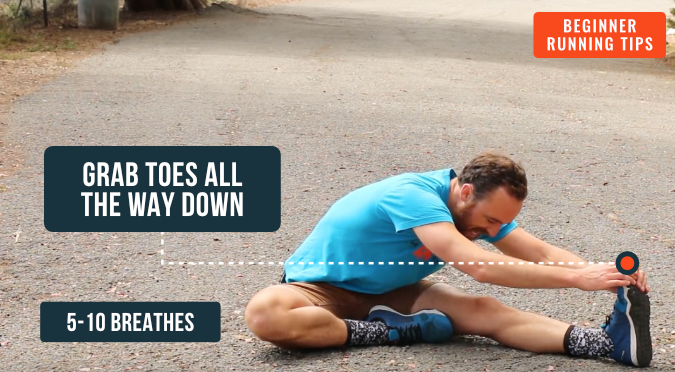
- Keep your legs in the same configuration but return your body to “upright”.
- Now rotate your torso to face the extended leg.
- You can keep both arms on the extended leg, reaching out near the toe.
- Now repeat the 5-10 inhales & exhales.
- Again, use the exhales to find a greater stretch on each repetition.
- This is a GREAT stretch for your hamstring and calf.
- * For increased stretch, flex and hold onto the toe with your hands.
Complete 5-10 breaths of BOTH stretches on EACH leg.
Soccer Stretch: Ultimate Runner’s Stretch
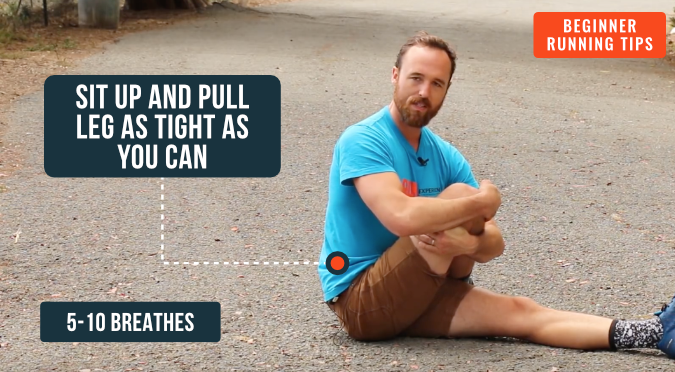
Another post-run favorite. Try this:
- Sit on the ground.
- Extend your right leg out and cross the left leg in a “figure 4” shape.
- Hug the left knee of the crossed leg into your chest.
- Allow your back to round into the position, folding over your bent leg.
- Now take a big inhale.
- On your exhale, try and straighten the back into an upright position, while squeezing the knee tighter to the chest.
- Press the chest to the knee and the tailbone straight into the ground.
- Repeat for 5-10 big breaths, increasing the stretch through the glutes, hamstrings, and hips.
Here’s a bonus:
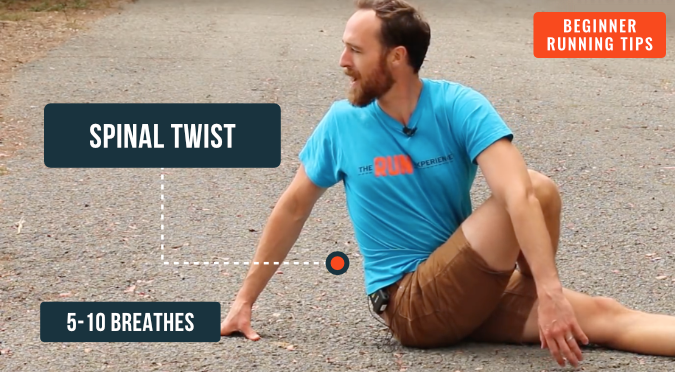
- After 5-10 breaths there, place the arm of the extended leg across/in front of your bent leg.
- Find a slight spinal twist, keeping the back as upright as possible.
- Now repeat the 5-10 big breaths, increasing the twist on each exhale.
Repeat everything on the other side!
Stretches For Runners: Downward Dog
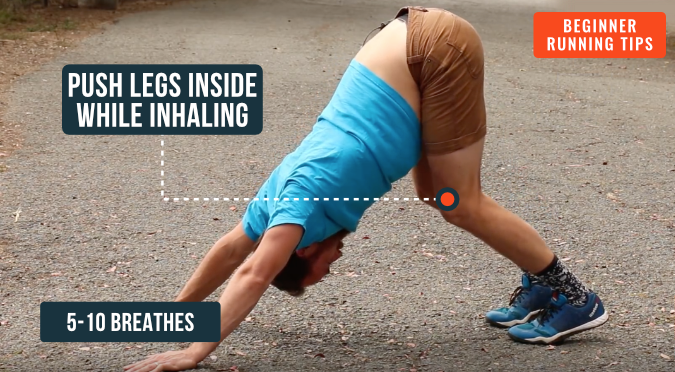
The last of our beginner running tips for unwinding after your run. Here’s how it works:
- Get onto all fours, on a flat surface.
- From here press up into an inverted “V” position.
- Feet and hands should be hips’ width apart.
- Palms and feet should be flat on the ground (ideally).
- Start by simply pedaling out the feet, giving the calves a light stretch.
- After a few seconds of this, find your still “V” position again.
- Now, you’ll take your 5-10 breaths, but with a little exaggerated movement.
- On the inhale: you’ll bend your knees toward your chest, driving the hips high to the sky, driving heels down to the ground.
- On the exhale: you’ll straighten your legs and press your chest through your hands, back toward your legs. *Heels stay flat.
- Repeat for 5-10 repetitions.
We know how many beginners running tips are out there, overwhelming you from every angle–on the internet, from your seasoned runner friends, in books, magazines, apps…the list goes on.
If you take nothing else away from this post, remember that your body can’t work for you if you don’t work for it! You’ve got 24 hours in your day. A stretching routine can take you less than 10 minutes a day. Trust us, these running stretches for beginners are worth it!
Frequently Asked Questions (FAQs) About Stretching
What’s the best stretching routine for beginners?
The best stretching routine will involve loosening up and relaxing the entire body. Many runners make the mistake of only focusing on their lower body, but muscle tension in the neck and shoulders can be equally detrimental to your running health.
What are the top stretching exercises for beginners?
Downward dog is hands-down (get it?) the best stretching exercise for beginners. It’s easy to do, works a broad range of muscles, and feels downright wonderful. Plus, you can do it anywhere without a mat or any equipment.
How do you stretch after running?
Take it slow. Make sure you do a short 5-minute cooldown first, and then start from your toes and work your way up to your neck.
How do you stretch before a run?
Keep it light, and only stretch before a run after you’ve warmed up a bit. It’s best to jog for 10 minutes or a mile before doing any pre-run stretches to avoid pulling anything that’s still tight.
What are the best pre-run stretches?
The best pre-run stretches are more dynamic, such as lunges, leg kicks, and the like. Static stretches are best saved for after the run.
Download our new mobile app full of tips, videos, training advice from running coaches, and motivation to get you started. We have more running stretches for beginners, post-run stretches, pre-run stretches, and more. Don’t forget to check out our broad range of training programs to help you reach your running and fitness goals, too!
